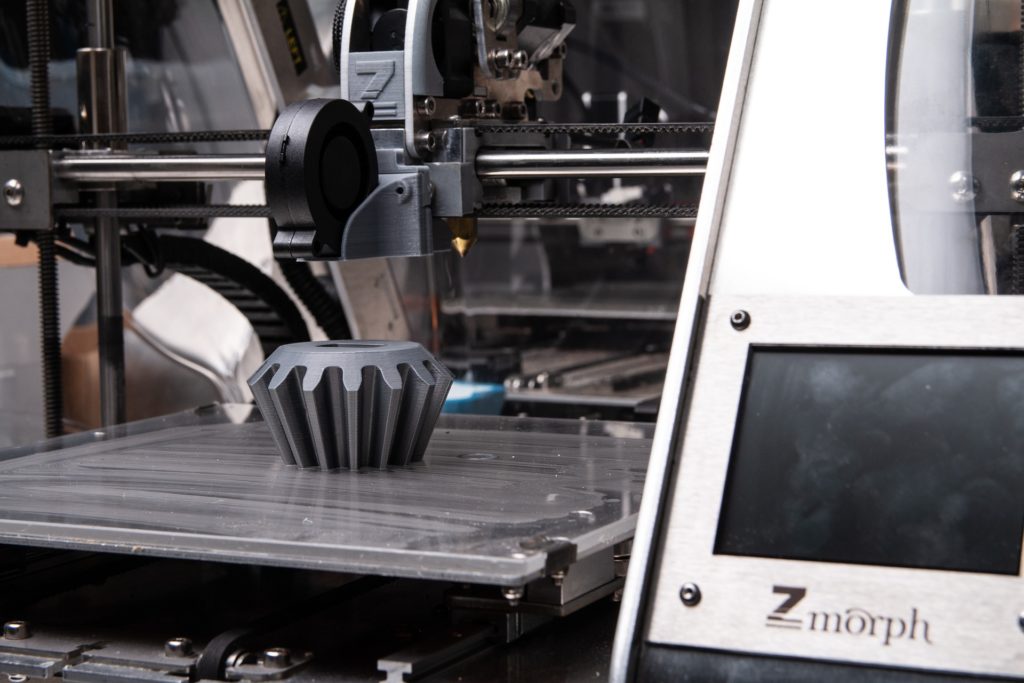3D printing can dramatically speed up the production of everything from food to prosthetic limbs. When it comes to civil engineering, 3D printing also offers great potential for repairing our roads and working on bridges and dams.
Enhancing Road Repair and Resilience Techniques
Road maintenance often falls under the umbrella of civil engineering responsibilities. Members of the public typically appreciate potholes getting repaired, but they don’t like how the heavy equipment needed for the job creates congestion for the traffic flow. Fixing the roads may soon become easier — and substantially more mobile — thanks to 3D printing.
A machine called the Addibot is a streamlined and portable 3D printer originally designed for ice resurfacing. However, its inventor is tweaking the design to make it compatible with tar and asphalt.
Keeping the roads in good condition also may require civil engineers to get to the bottom of what’s causing them to break down. In areas of the country with Amish populations, the buggies and horseshoes can be hard on the pavement.
One solution that may require 3D printing is a screw-in stud for the horses to wear. It has a larger surface area than what the horses used before and might be kinder to the pavement. Users could also change the studs for different seasons.
These options take a different approach to road infrastructure maintenance. But, both examples show how 3D printing could play a key role in fixing issues or making them less likely to happen so often.
Using 3D Printing for River Management
Civil engineers that contribute to water-based projects are familiar with using cofferdams. They remove water from a submerged work area. Water-filled cofferdams are quick to install because they use the existing water source to fill them. One example of using cofferdams in civil engineering involved the installation of a 25-meter flood gate for a river in England. It will protect approximately 14,000 homes and businesses from flooding. 3D printed formwork are being worked at globally and these could include work on dams and such.
3D printing’s applications for civil engineering don’t extend to cofferdams yet, but civil engineers could still encounter the method if they work on any projects related to river management. In one Chinese town, a firm says it printed a 500-meter river revetment wall to safeguard the shore from the adverse effects of things like strong currents and the pressure of rising water levels. We’ve also seen a number of 3D printed reef initiatives.
Making Improvements to Embedded Sensors
Civil engineers frequently depend on fiber-optic sensors to measure things like temperature, pressure and strain. As such, they’re useful for performance-verification purposes. However, sensor installation poses obstacles. For example, putting a single sensor in place could cost hundreds of dollars, and concrete is not an ideal substance for sensors due to its high alkalinity.
Researchers developed a 3D-printed packaging for sensors that’s durable and simple to mount. The team concluded that lab testing proved the casing suitable for all but extremely sensitive measurements. A group at Purdue University also created sensors for Indiana’s roadways that detect when to reopen areas that were under construction.
If new concrete bears weight prematurely, it could crack. The Purdue University sensors were not 3D printed, but perhaps the technology could fit into their production, too. Placing printed sensors on light posts, roadways and other infrastructure could make it easier, safer and cheaper to maintain.
Increasing the Options for Bridge Construction
3D printing made headlines in 2017 when the first pre-stressed, concrete bicycle bridge opened to users in The Netherlands. It has six elements, each comprising up to 90 layers. Although the bridge was only 6.5 meters long, it showed engineers what’s possible with this kind of 3D printing application.
Then, more recently, Shanghai, China reportedly became the site of the world’s longest 3D-printed bridge. Its total length is 26 meters. The structure took 450 hours to build, and it has 44 concrete units. Robotic arms helped build the bridge, which has a monitoring system built in to track how the concrete degrades with time.
These methods of bridge construction are not widely used yet. However, they should encourage civil engineers to explore new technology and see if 3D printing fits their needs.
Exciting Developments in Civil Engineering
The innovations profiled here emphasize why 3D printing has much to offer the civil engineering sector. Professionals should stay abreast of ways to apply the technology and keep it in mind for future projects.
Join the discussion of this and other 3D printing topics at 3DPrintBoard.com.
Subscribe to Our Email Newsletter
Stay up-to-date on all the latest news from the 3D printing industry and receive information and offers from third party vendors.
You May Also Like
Gorilla Sports GE’s First 3D Printed Titanium Cast
How do you help a gorilla with a broken arm? Sounds like the start of a bad joke a zookeeper might tell, but it’s an actual dilemma recently faced by...
Nylon 3D Printed Parts Made More Functional with Coatings & Colors
Parts 3D printed from polyamide (PA, Nylon) 12 using powder bed fusion (PBF) are a mainstay in the additive manufacturing (AM) industry. While post-finishing processes have improved the porosity of...
$25M to Back Sintavia’s Largest Expansion of Metal 3D Printing Capacity Since 2019
Sintavia, the digital manufacturing company specializing in mission-critical parts for strategic sectors, announced a $25 million investment to increase its production capacity, the largest expansion to its operations since 2019....
Velo3D Initiates Public Offering in a Bid to Strengthen Financial Foundations and Drive Future Growth
Velo3D (NYSE: VLD) has been among a number of publicly traded 3D printing firms that have attempted to weather the current macroeconomic climate. After posting a challenging financial report for 2023,...


































